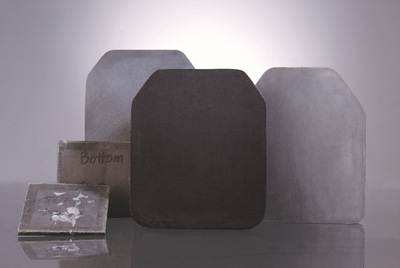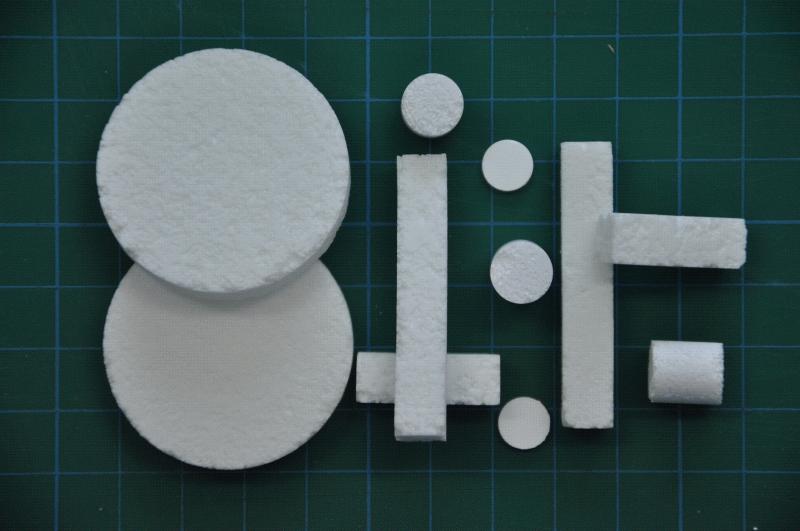Certain ceramic materials have similar ionic conductivity to liquids (strong electrolytes) under certain conditions (such as temperature and pressure). Ceramic materials with electron (or hole) conductivity or ion conductivity are called conductive ceramics. Most of these ceramics are solid electrolytes, also known as fast ion conductors or fast ion ceramics.
In fact, every fast ion conductor has a dominant migration ion, so it has good ion selectivity. Due to the sensitivity of ion conduction to the activity (concentration or partial pressure), temperature, humidity, and pressure of surrounding substances, it is possible to use fast ion conductors to make a variety of solid ion selective electrodes, gas (liquid) sensitive, heat sensitive, humidity sensitive and pressure sensitive. Sensitive sensors and high-purity material extraction devices; use the oxidation-reduction coloring effect of some ions in the fast ion conductor to make colored electrochromic displays; because of its charging and discharging characteristics, it can be used to make coulomb counters, resistors, and electrochemical switches , Electric integrator, memory element and many other ion devices.
Fast ion conductor materials can be divided into two categories: cation conductors and anion conductors according to the types of their conductive ions. The former has
silver and copper ion conductors, sodium ion conductors (such as β-Al2O3 type), lithium ion conductors (such as β-LiAlSiO4, Li-β-Al2O3, etc.), hydrogen ion conductors (such as H+-β-Al2O3, H3O+-β-Al2O3) , NH+-β-AI2O3); the latter has oxygen ion conductors (such as fluorite type structure oxide ZrO2, HfO2, ThO2, CeO2, etc.) and perovskite type structure compounds (such as LaAIO3, CaTiO3, SrTiO3, LaCrO3, etc.), and fluoride ion conductors (such as CaF2, PbF2, etc.).

Conductive ceramics
1. Ohmic resistance conductive ceramics
Here we mainly introduce thin film ohmic resistance and thick film ohmic resistance.
Most resistors used in electrical or electronic devices must have ohmic properties and a small temperature coefficient of resistance. The resistance required on electronic instruments is mainly in the range of 10^3~10^8Ω, and the material with suitable electrical properties is made of 110mm long and 105Ω.Resistors have a cross-sectional area of
10^(-8)c㎡, which is equivalent to a strip with a thickness of 1μm and a width of 1μm. To obtain materials of this size,In fact, it is more difficult, but the following methods can be used to achieve:
①A very thin conductive layer is plated on the insulating substrate, and a large aspect ratio can be obtained through appropriate corrosion.
② Doping conductive materials with insulating phase.
The above methods are often used in combination to achieve the desired effect.
(1) Thin film ohmic resistance conductive ceramics
Generally, a film with a thickness of 10nm is easier to use evaporation, sputtering or chemical vapor deposition (CVD) in a vacuum chamber.
form. Many metals and alloys, such as Al, Ag, Au and Ni-Cr alloys, can evaporate and condense to the on a suitable substrate. The Ni-Cr alloy with a resistivity of 10^-6Ω·m is deposited in the form of a thin film, which is a high-resistance resistor provided the foundation.
Oxide films are often formed by "sputtering" methods. This method is to fill the reaction chamber with about 1Pa of argon gas, which people have a small amount of oxygen. The solid oxide target to be sputtered is fixed on a metal plate. The substrate to be deposited on the film is also mounted on the metal plate. A high frequency (about 1MHz) and high voltage (about 5kv) field is applied between the two plates to generate plasma. Gaseous ions bombard the target and separate the ion or molecular beam from its surface, pass through the plasma and deposit on the substrate. For example, 90In2O3-10SnO2 is deposited by sputtering to make a transparent conductive film.
Some are prepared by chemical vapor deposition, such as indium tin oxide or ITO thin film resistors. The glass strips (sometimes talc strips) are heated in air with a controllable temperature to 700°C, and then within a few seconds A mixture of SnCl4 and SbCl5 is introduced. It reacts with water on the surface of the test strip to form a thin film of the mixture firmly adhered to the substrate. Sb reduces the resistivity of SnO2 and controls its temperature coefficient of resistance to close to zero; SnO2 can only provide high negative resistivity, and a small part of the oxygen ions in the deposit can be replaced by Cl- ions, which also reduces the resistivity , Because CI-ion is lower than O2-, so it is supplemented by an electron in the conduction band.
In practice, through the resistive layer, threads are engraved on the bar-shaped cylindrical substrate to increase the aspect ratio, and the engraving is automatically stopped when the resistance value is reached, so that the resistivity can be kept within the tolerance range.
Declaration: This article is provided by CERADIR™ users or obtained from Internet, the content does not represent the position of CERADIR™. We are not responsible for the authenticity/accuracy of the article, especially the effects of the products concerned. This article is for study only, it does not constitute any investment or application advice. For reprinting, please contact the original author. If it involves the copyright and/or other issues, please contact us and we will deal with it asap! CERADIR™ has the interpretation of this declaration.







